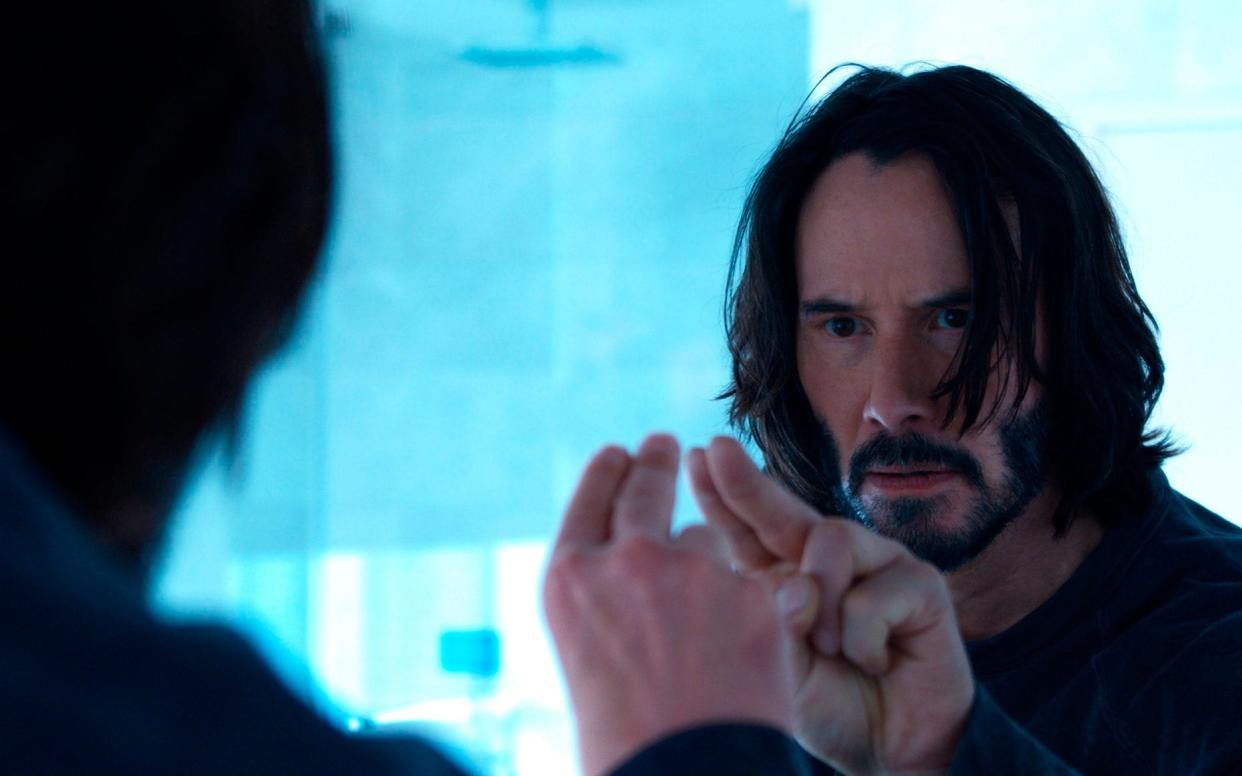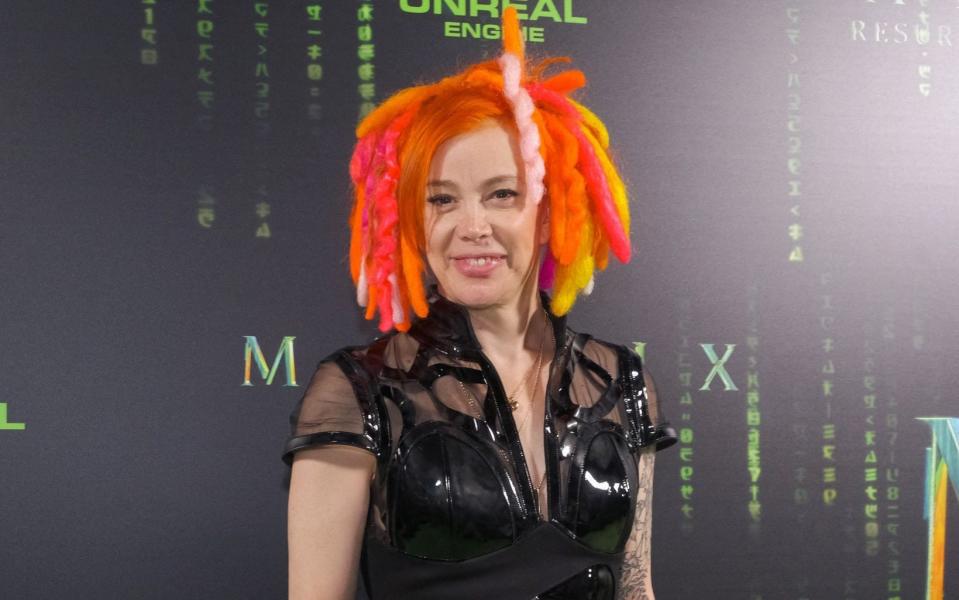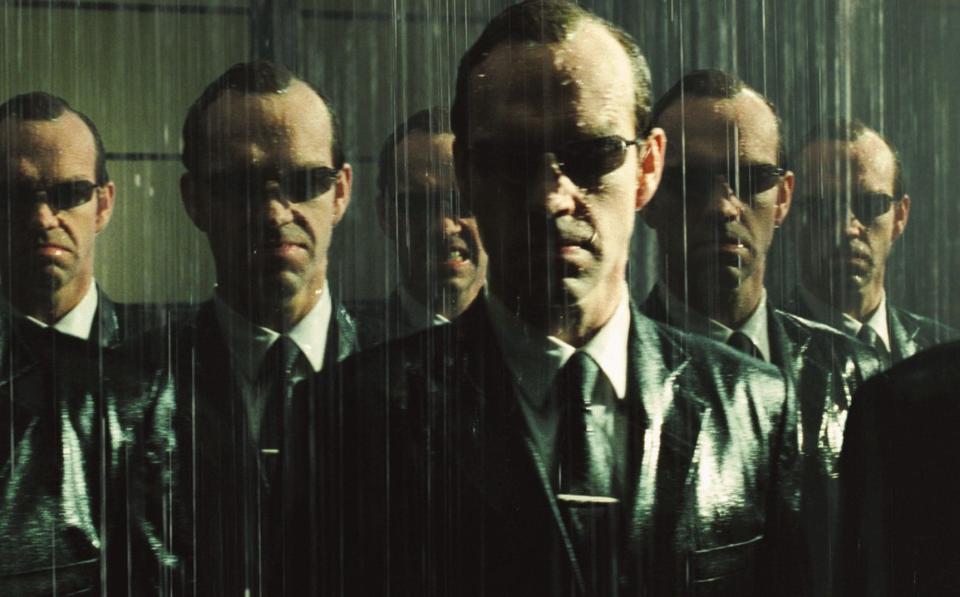Why The Matrix is a trans allegory – not an alt-Right parable

Like many transgender people, I hoped I’d see myself in the new Matrix film. I just hadn’t expected it to be so literal.
Admittedly you won’t find my face or voice in The Matrix Resurrections, and I’m certainly not listed in the credits. But my first name – hardly common, and one I chose myself – plays a small but important role in the plot. It seems writer, director and fellow trans woman Lana Wachowski was also drawn to the ancient Greek myth of a woman forced to spend years of her life as a cow.
It’s a nice reminder of why the Matrix matters to so many trans people. Since the first film’s release in 1999, we have found in its mixture of sci-fi action and mind-bending philosophy a lucid reflection of our own experiences. “I’m glad that it has gotten out,” said Lana’s sister and longtime collaborator Lilly, also trans, in 2019. “I don’t know how present my transness was in the back of the brain while writing it, but it all came from the same sort of fire.”
I was curious to see how this fourth film would handle those themes now that both Lana and her sister Lilly, who directed the first three films together, have come out – especially after Lilly declined the project because it reminded her too much of her previous life.
In the event, however, even I was surprised by just how trans The Matrix Resurrections is. It’s a film deeply informed by the psychology of gender transition; more than that, it uses these motifs as a window into more universal dilemmas: how people struggle under society’s demands, why some break out, and how they can help others do the same.
What made the first Matrix so trans? It’s not merely that its journey out of hell begins with a pill. Its protagonist, Neo (Keanu Reeves), starts off living “two lives”, sleepwalking through his day job as “Thomas Anderson” while finding his real community on the internet. “You’ve felt your entire life that something is wrong with the world... like a splinter in your mind,” Morpheus (Laurence Fishburne) tells him, in a speech that perfectly expresses the way gender dysphoria feels.
Neo takes the “red pill”, and is soon swallowed by a mirror, flushed into a new reality. This real world is brutal, but offers real connection and freedom that the simulated world never did. (Originally, the Wachowskis had planned for one character – Switch, played by Belinda McCrory – to be different sexes in each world, but studio bosses nixed that idea.) Having exiled himself from society’s rules, Neo can now consciously bend or break them, presenting himself exactly how he likes. His nemesis Agent Smith, an embodiment of normative masculinity in his stiff suit and tie, keeps trying to box Neo into his old identity by calling him “Mr Anderson” (known in the trans community as “deadnaming”), until finally being defeated with a triumphant declaration: “My name is Neo.”
From this angle, Neo, whom in the fourth film we find back inside the Matrix in his Thomas Anderson drag, has not just forgotten his old self; he has detransitioned. Most media attention focuses on permanent detransitioners who renounce their trans identity, but many of us also temporarily detransition due to prejudice or repression. Some go through multiple cycles of denial and hope – “trapped inside these repeating loops”, as one character in Resurrections puts it. The montage in which Neo tries to bury himself in work, set to Jefferson Airplane’s White Rabbit, ranks among Hollywood’s most accurate depictions of traumatic dissociation.

The pain this inflicts on Neo, including suicidal feelings, is bitterly familiar to me. So is his amnesia, since repressing one’s identity often requires willfully forgetting one’s experiences. Later, Neo discovers that the machines have given him a false self-image, meaning he literally does not recognise his reflection; his false self is going bald, a common dysphoria trigger for trans women who transition later in life. When a new version of Morpheus (Yahya Abdul-Mateen II) appears, Neo’s bargaining attempt to reject his message – “It was a test! An experiment!” – sounds just like mine. So does his breaking point, which comes when Morpheus offers him the chance to return to his old life: “Every day. Over and over. Forever.”
Unexpectedly, it might actually be Trinity, now also back in the Matrix and known as “Tiffany”, who brings the strongest trans vibes. “It’s too late,” she tells Neo at one point, echoing the despair of every older transitioner. In another meeting, she describes her joy at recognising herself in a fictional character, only to feel betrayed when her husband mocked her tentative disclosure. Forced to choose between family and self-actualisation, she finally snaps as Neo did at a mention of her deadname: “Will you stop f---ing calling me that?
Almost every character shares some of this trans energy. At their first meeting, Morpheus and Bugs (Jessica Henwick) – who lives freely outside the Matrix – immediately trust each other, because they have gone through the same awakening. “For the first time,” says Morpheus. “I knew who I was and what I had to do.” And like trans people, Neo’s fellow hackers, including rebel machines, are bound together in a chain of inspiration and mentorship, each saying that they owe their rebirth to another.

Some cisgender viewers (that is, not trans) have wondered why the hackers make such effort to rescue Neo when doing so could spark war. To me, it could not be more natural. Without role models, without help from school or parents or doctors, trans people are often left to care for and awaken each other. We are generous to others struggling with their gender because we remember those who were generous to us. Of course Neo’s crewmates, whom he inspired, risk death to help him rescue his mentor Trinity; of course they are so committed to respecting her choice that they’ll abandon their heist if she refuses.
This is the core of Lana Wachowski’s attempt to reclaim The Matrix from its more conservative fans. The first film was never reducible to a trans allegory alone, and its spirit of violent individualism – as well as its blank male protagonist, who had few distinctive traits beyond his seemingly predestined messiahship – gave ample ammunition to the far-Right, who have since made “the red pill” a metaphor for extremist radicalisation. The Matrix Resurrections picks up the torch of the widely-mocked second and third films, forging a communitarian version of the Matrix myth where (spoiler number one) the heroes win through mutual compassion, only villains use the word “sheeple”, and (spoiler number two) the chosen one is a woman who chose her name.
Long ago, when I still thought I was a cis man, I felt certain that anyone could understand what being trans was like. After all, didn’t I? Once I woke up, however, I had a crisis of faith about whether real cis people would ever get it. The Matrix was a comfort because it showed that trans stories could resonate profoundly with cis audiences.
In Resurrections, Neo and Trinity feel more trans than ever, and eventually we learn that the Matrix itself is powered by their yearning. But their transness never becomes literal, and the system only works because their suffering mirrors that of the whole population. So the film suggests that trans people’s battle for self-knowledge and dignity is just one part of everyone’s battle, and that anyone can benefit from the same solidarity and care. Even if you don’t see your name here, it’s your story too.
The Matrix Resurrections is in cinemas now